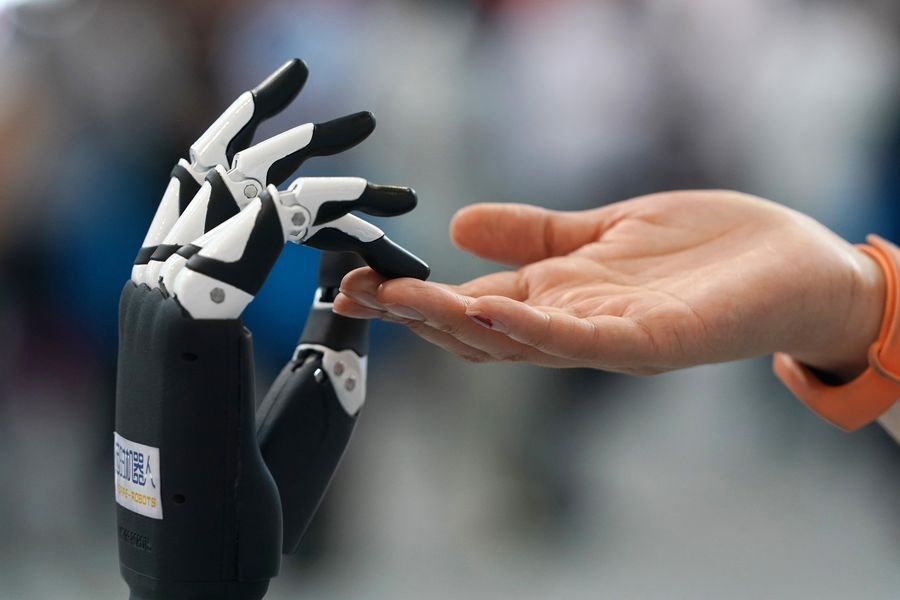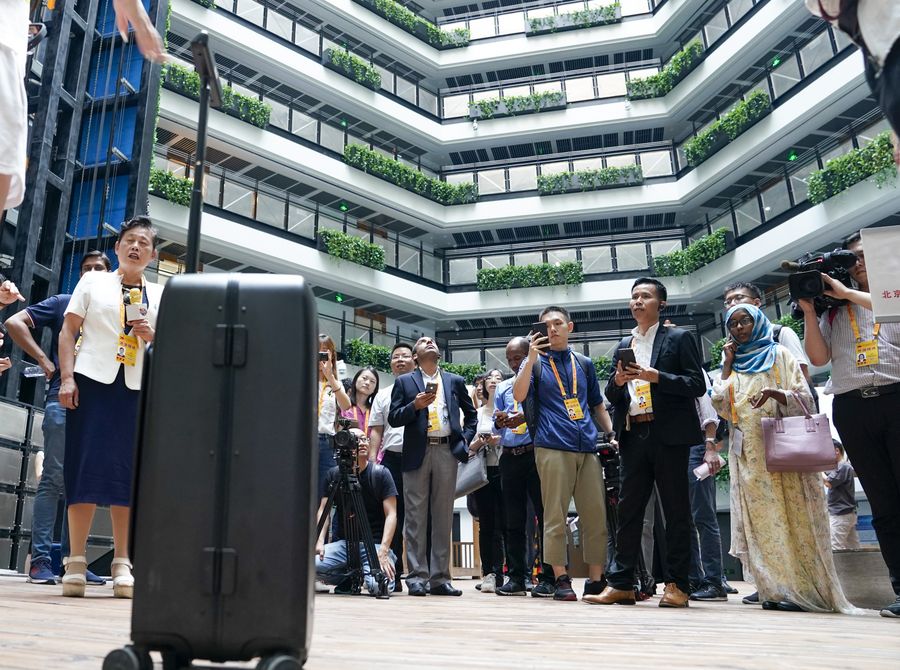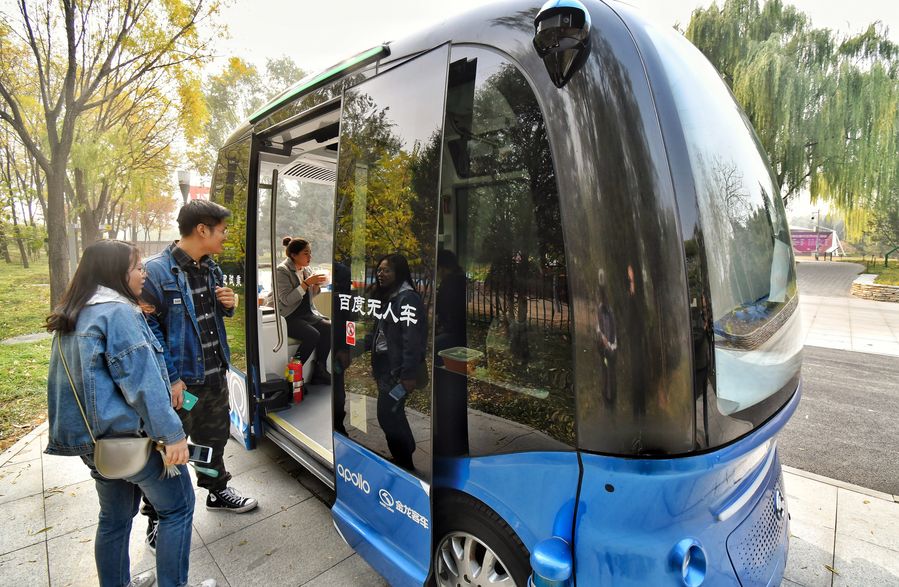
An exhibitor demonstrates a robot in an exhibition held during the national mass entrepreneurship and innovation week in the Zhongguancun National Innovation Demonstration Zone in Beijing, June 13, 2019. (Xinhua/Ju Huanzong)
Beijing's Haidian District is seeking a new urban form that supports innovation, a high-quality city in itself.
"We're trying to create a stress-free environment for research staff so that they can focus on their innovative research," an official from the district said.
BEIJING, Jan. 15 (Xinhua) -- Beijing's Haidian District, home to the capital's high tech hub Zhongguancun Science Park, is striving to build a livable community featuring high quality of life while maintaining a steady growth momentum as the capital's sci-tech powerhouse.
"We've changed our focus from the enterprises in the cluster to the people who work in those organizations," said Yu Jun, Party secretary of Haidian, noting that the district is seeking a new urban form that supports innovation, a high-quality city in itself.
Haidian has been exploring more and digging deeper into urban functions as well as thoughtful and satisfying services for the people.
Haidian is one of the first districts in Beijing to roll out free WiFi hotspots covering all public service areas. In today's 5G era, the district now seeks to turn people's commute into a "workplace," creating a space for researchers and developers to not only capture their ideas when they spark but share them in real-time.
A walking path has been built to link Tsinghua University with its surrounding offices, as well as a 6.5-km-long bike lane that connects the concentrated residential community of Huilongguan to the Zhongguancun Software Park in Shangdi's information industry base.
"Through these initial attempts, we're trying to create a stress-free environment for research staff so that they can focus on their innovative research," Yu said.

Journalists view an intelligent suitcase during a visit to the Innovation Achievement Exhibition in Zhongguancun National Innovative Demonstration Zone in Beijing, capital of China, Sept. 26, 2019. (Xinhua/Liu Chan)
Established in 1988 with clusters of universities, tech firms and research institutes, Zhongguancun was the first national high-tech industrial development zone. It strengthened its role as an innovation incubator after the State Council approved that it would be built into a national scientific and technological innovation center with global influence in 2009.
The overall revenue of new high-tech companies in the Zhongguancun Haidian Science Park rose by more than 10 percent year on year in 2019 to reach 2.6 trillion yuan (about 377.8 billion U.S. dollars), according to the recently delivered government work report of the district.
Haidian registered 350 patents per 10,000 citizens last year, 30 times the national average. The district currently has 40 unicorn tech startups, accounting for over one-fifth of the country's total.
According to a recent action plan of high-quality development, the gross domestic product (GDP) in the district is expected to surpass 1 trillion yuan around 2025, with GDP per capita reaching 40,000 U.S. dollars.

Photo taken on Nov. 7, 2019 shows the main building of Tsinghua University in Beijing, capital of China. (Xinhua/Li Jing)
Haidian is also fully utilizing its abundant intellectual resources gathered in China's top universities such as Peking and Tsinghua, tech giants and fast-growing industry leaders such as Baidu, Megvii, SenseTime and Cambricon, in upgrading its urban construction and services as a modern science city via the "City Brain."
Several City Brain projects have made a dent, with application scenarios ranging from smart construction sites and water quality and pollution monitoring to the IoT for public utilities and security management of public rental houses based on facial recognition.
"Data barriers between different government departments have been broken down," said Li Wei, director of Haidian's urban service management command center. "We've brought together six departments onto our platform for slag truck management, including departments of transportation, urban construction and public security, as well as ecology and environment."
Chen Zhaohui, head of the Haidian sub-office of the Beijing Municipal Commission of Planning and Natural Resources, said high-quality community construction and high-tech development are just like the dual aspects of a Tai Chi diagram, representing unity rather than a contradiction.

Citizens get on an unmanned sightseeing bus at an AI park in Haidian District in Beijing, capital of China, on Nov. 3, 2018. (Xinhua/Li Xin)
Last year, the district sped up the construction of an international talent community and started building a global youth entrepreneurship platform and an innovation port for overseas academicians.
"The talent policy that simply emphasizes providing housing and money has its own characteristics of the times," Yu Jun said. "We're now offering more development opportunities for talented people." ■



